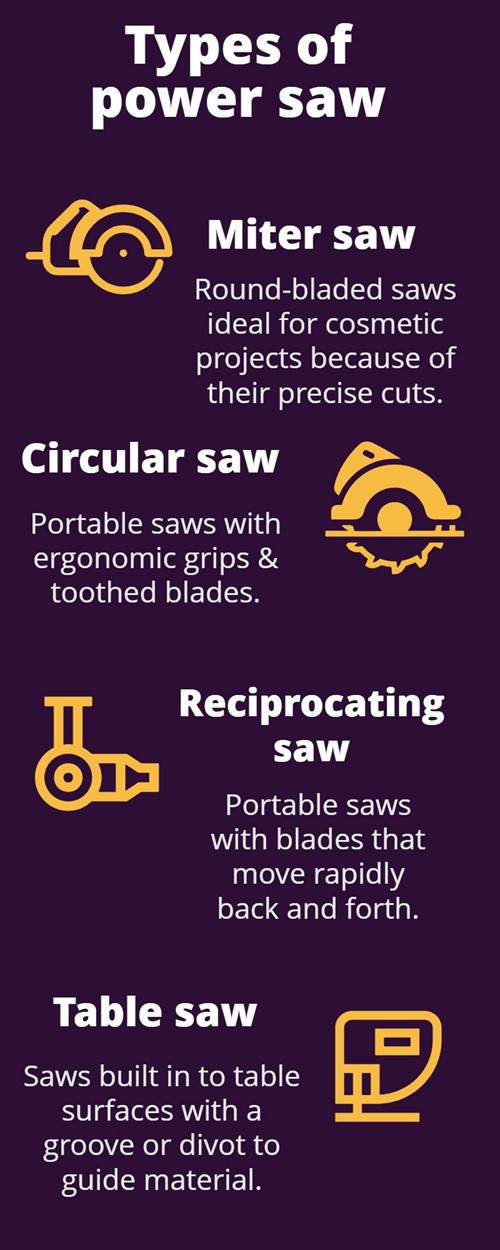Email: [email protected]

When it comes to cutting, saws are among the first tools many folks think of. Most think of a household hack saw or common rip-cut saw, both needing only a little elbow grease to cut through whatever medium you may be using. But what about power saws?
While hand saws are very common in the home, some power saws are equally common, though their primary use may be a little daunting at first.
Check out these four basic power saws and their primary function around the home:
Miter saws make home improvement projects, especially cosmetic ones, much easier thanks to the precision of their cuts. They're often characterized by having a circular blade attached to an arm that fits into the grooves outlined in the saw's base.
This allows homeowners and DIY enthusiasts more ease of use when creating miter joints, such as two pieces of crown molding cut to fit at a perfect 90-degree angle. Compound miter saws are also an excellent choice for individuals hoping to achieve perfect angled cuts, straight cuts and any combination of the two.
Circular saws tend to have a circular, toothed saw blade - often complete with saw guard - that are portable. These saws have grips in ergonomic and strategic places to ensure the user can safely cut through whatever surface they need to. However, because they are not stationary and don't have a base of their own, like miter saws, they often need a sawhorse or saw bench.
Unlike circular saws, reciprocating saws are straight blades that move back and forth, much like a rip-cut saw. These saws are portable and have a plug-stable power supply or are battery operated. They're fully portable and are exceptional for cutting piping, small pieces of wood, drywall and other small or harder to reach items and areas.
Unlike their counterparts, table saws are usually stationary. They often have a saw in the center of the table, with a divot that allows the saw to safely operate and slice through wood, soft metal, piping and other durable materials.
These vary in size and should be used in an area with plenty of room to avoid injury or inhalation of sawdust. They may also come in a variety of materials such as heft composite table surfaces, metal or other industrial materials.
These are just a few of the most dominant and common saws many homeowners and DIYers may find in their repertoire. If you're just starting out, these basics are excellent ways to determine which type of saws you may need for your projects, their defining characteristics and when you may use them.

If you're ever in doubt over how to use a certain type of saw or are simply uncomfortable using one, find a professional contractor to help out with any projects you may be engaging in. They'll have a wealth of knowledge and the expertise to help you successfully complete your home improvement goals.

Dating back to the 1970s when his father put him in charge of the family real estate business, Jeffrey Germagian has built a longstanding portfolio of real estate transactions and developments. Along the way, he has grown the family’s original company, then known as Baystate Realty, to the elite status it represents today as ERA Key Realty Services.
Although we’ve expanded our real estate offerings and our branding has evolved to represent all of the real estate services that we provide, ERA Key Realty, The Baystate Group still holds true to the honest business practices and principles that Jeffrey’s father set out with decades ago.
Jeffrey manages the Baystate Group which specializes in traditional home resales, land development, and 55 communities.
He lives in Hopedale, MA, and serves the local towns in the area including most suburbs of Boston as well as southwest of Boston. He is a Certified Residential Specialist and is fully licensed as a real estate agent to practice throughout the entire state of Massachusetts.